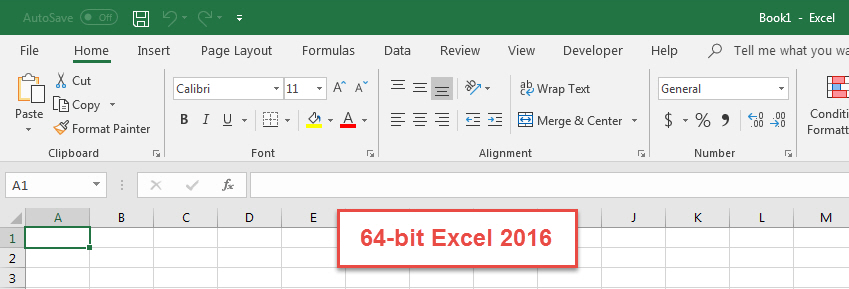

This means you can use more physical memory for data than before, potentially reducing the overhead spent moving data in and out of physical memory Comparing 32-bit and 64-bit systemsĪpplications built with the 64-bit versions of Office can reference larger address spaces than 32-bit versions. This is discussed in more detail in this article as well as compatibility issues between the 32-bit and 64-bit versions and suggested solutions. Additionally, you must update address pointers and display window handles in user-defined types that are used by these statements. In VBA 7, you must update existing Windows API statements ( Declare statements) to work with the 64-bit version. You must explicitly select the Microsoft Office 64-bit version installation option.
32 BIT VS 64 BIT MICROSOFT OFFICE 2016 INSTALL
Using the 32-bit versions of Microsoft Office enable you to use solutions built in previous versions of Office without further modifications.īy default, when you install a 64-bit version of Office you cannot install the 32-bit version alongside it. The changes described in this article apply only to the 64-bit versions of Office.

Visual Basic for Applications 7.0 (VBA 7) is released in the 64-bit versions for Office, and it works with both 32-bit and 64-bit applications. However, when you write 64-bit code, you should ensure that your code contains specific keywords and conditional compilation constants to ensure that the code is backward compatible with earlier version of Office, and that the correct code is being executed if you mix 32-bit and 64-bit code. When writing 32-bit code, you can use the 64-bit version of Office without any changes.

The 64-bit versions of Office enable you to move more data around for increased capability, for example when you work with large numbers in Microsoft Excel 2010. Office applications are available in 32-bit and 64-bit versions. Find out how the 32-bit version of Office is compatible with the 64-bit version of Office.


 0 kommentar(er)
0 kommentar(er)
